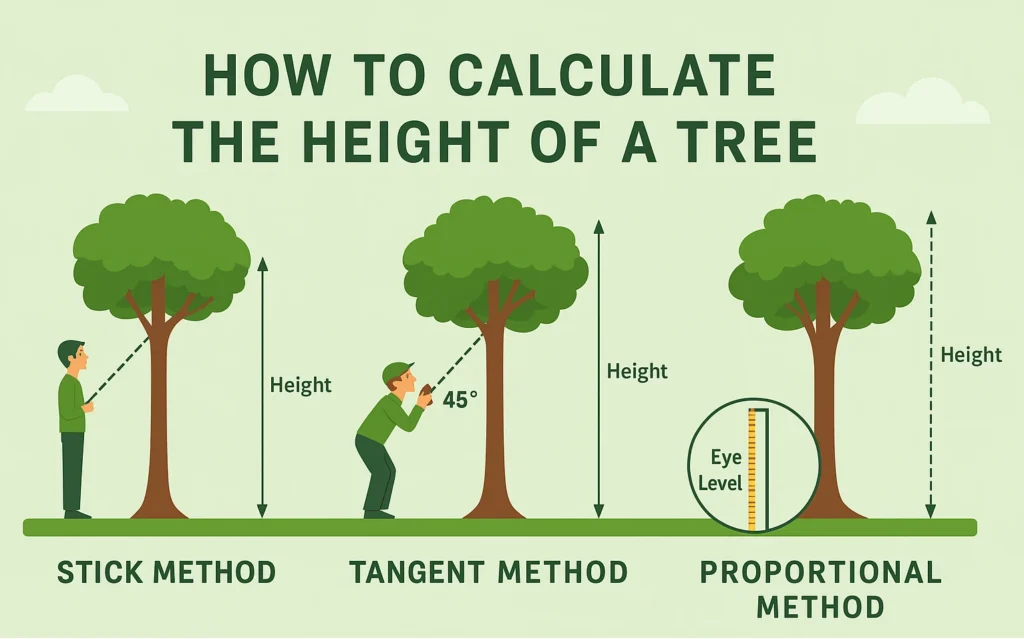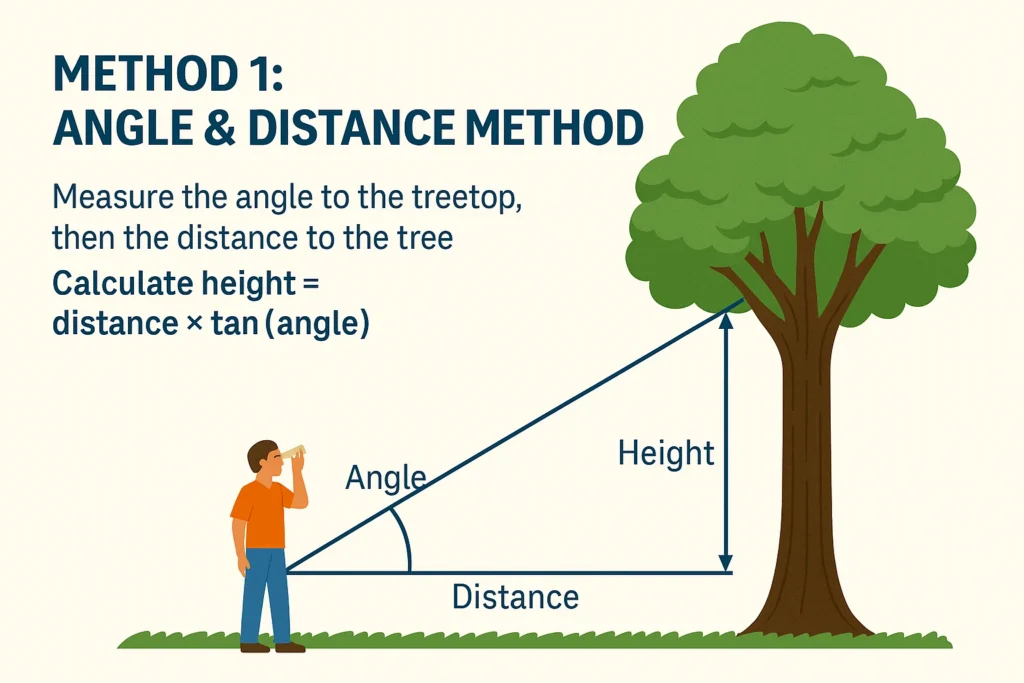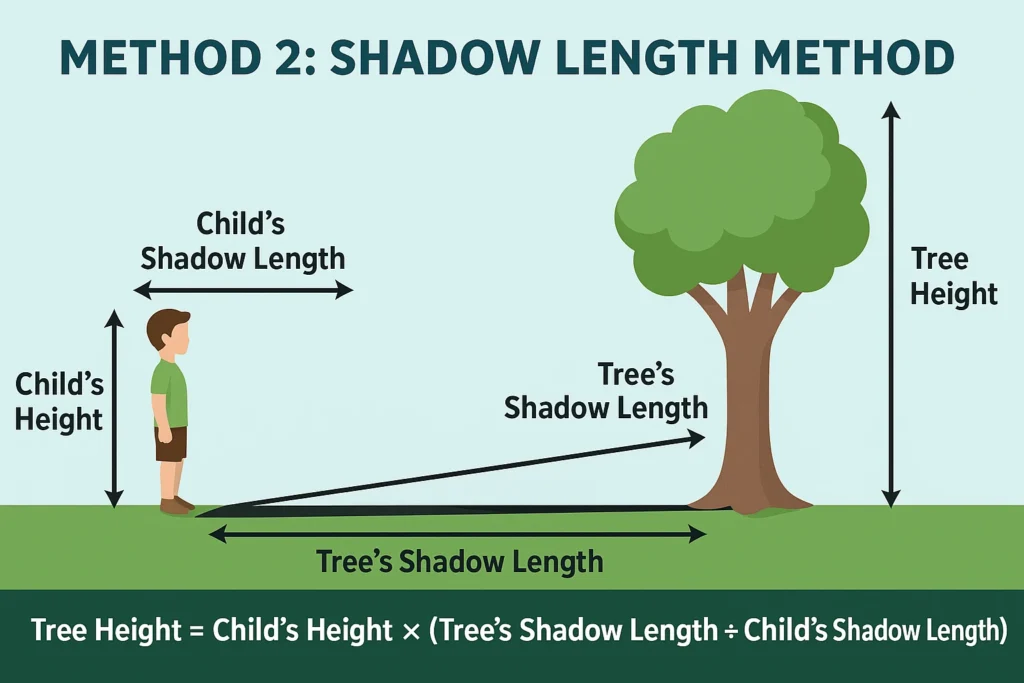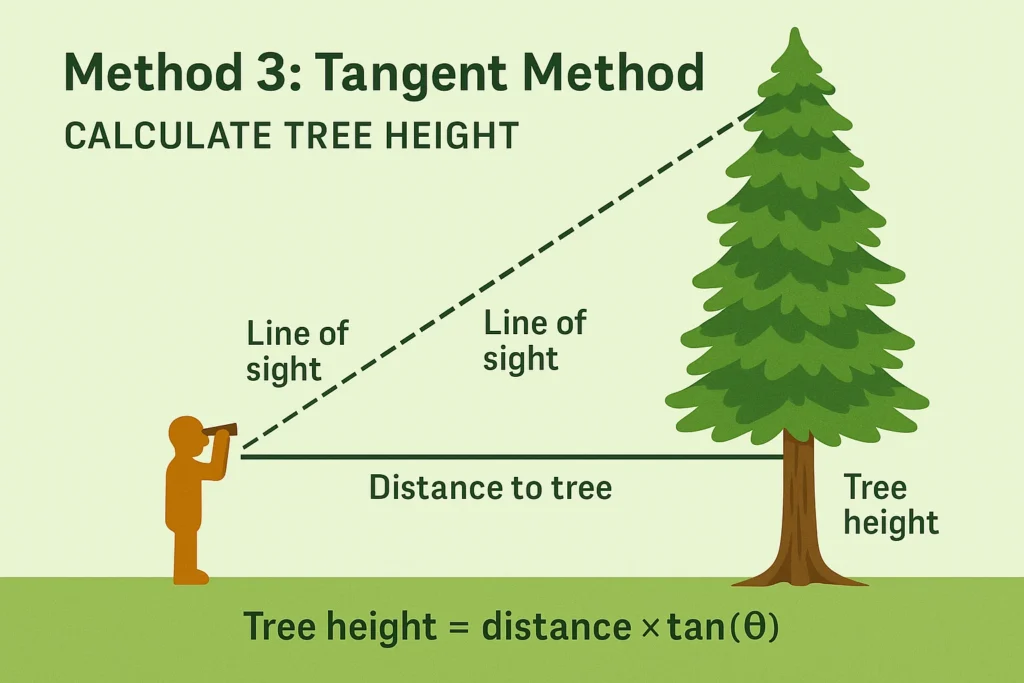The “advanced adjustment” will be factored in automatically when you calculate tree height using any method above.
🌳 Tree Height Calculator
Calculate tree height using various input methods, unit conversions, and advanced adjustments.
No calculations yet.
Tree Height Calculator – Accurately Measure Any Tree in Seconds

Created by James S. Lockwood
With a background in botany and ecological sciences, James specializes in creating practical tools and resources to help gardeners, farmers, and plant enthusiasts optimize their green spaces.
Our Tree Height Calculator helps you accurately estimate the height of any tree using simple measurements you can take from the ground. Whether you’re planning a timber sale, checking for utility clearance, or managing forest inventory, this tool gives you a fast, reliable height estimate without needing complex equipment. Just input your distance from the tree and the angle to the top, and the calculator does the rest—perfect for landowners, arborists, and outdoor professionals.

Table of Contents
How to Calculate the Height of a Tree (Step-by-Step)?
The basic idea behind tree height calculation comes down to elementary trigonometry. Yet, few of us remember those high school lessons on angles and tangents. The good news is you don’t need to. You just need a method that fits your tools and the tree’s location.
There’s no universal “best” way to calculate tree height. It depends on what you have on hand—sunlight, distance, or a smartphone with angle-measuring capability. Sometimes your results might vary slightly, but unless you’re conducting academic forestry research, precision down to the inch isn’t always critical.
Method 1: Angle & Distance Method

This is often the go-to choice for professionals. It uses a simple trigonometric formula:
Tree Height = Distance from tree × tan(Angle of elevation)
You can measure the angle using a clinometer or even a smartphone app. Stand at a known distance from the tree’s base, point to the top, and record the angle. Plug both values into our tree height calculator and get instant results in feet or meters.
Opinion: While accurate, this method relies on a clear line of sight to the top of the tree. In densely wooded areas or when trees lean, it can be less reliable.
Try this method directly in our calculator or pair it with the Tree Diameter Calculator if you’re estimating biomass or timber volume.
Method 2: Shadow Length Method

On sunny days, this method might be the simplest. Measure the shadow of the tree and your own shadow at the same time. Then use proportions:
(Tree height / Tree shadow) = (Your height / Your shadow)
Plug those into our tree height calculator, and you’re done.
Some argue this method is less precise—shadows can blur at the edges, and changing sun angles can distort results. But in everyday use, the margin of error is usually small. Plus, it requires no math skills if you’re using our tool.
This method feels almost too simple, but it works remarkably well for rough estimates, especially for children’s science projects or casual landscaping.
Method 3: Tangent Method

A variation on the angle method, this technique assumes you’re looking at the tree from a specific distance and angle. It’s best used when you can’t measure from the tree’s base due to obstacles or terrain. The tangent method can slightly overestimate if the ground slopes, though most people won’t notice the difference.
If you’re working with irregularly shaped trees—curved trunks, dense branching, or leaning trees—our tree height calculator also includes adjustment factors based on species and shape. That’s something most generic tools skip, but it matters for things like tree value estimates.
When in doubt, try two methods and average the results. Real-world conditions aren’t always textbook-perfect, and that’s okay.
Tree Height Estimation Methods Compared
Method: Angle & Distance
Tools Needed: Phone/Clinometer
Accuracy: High
Best For: Arborists, Foresters
Method: Shadow Length
Tools Needed: Yardstick + Sunlight
Accuracy: Medium
Best For: Gardeners, Students
Method: Tangent Method
Tools Needed: Any angle-based tool
Accuracy: High
Best For: Varied terrains
What Tools Do I Need for Estimating Tree Height?
- Measuring Tape: For distances up to 50–100 feet, a standard tape measure works.
- Clinometer / Angle Finder: Measures the angle of elevation accurately.
- Smartphone Apps: Many free or inexpensive apps can help measure angles, distances, or both.
- Protractor & String Method (DIY): Tie a string to a protractor’s center and attach a small weight for a makeshift angle meter.
Tree Height Calculator FAQs
How do you calculate the height of a tree?
To calculate the height of a tree, measure the angle from your eye to the top of the tree and the distance from the tree’s base. Then multiply the distance by the tangent of the angle. This is called the angle-distance method. Other methods include using the tree’s shadow and the tangent rule.
What is tree height diameter?
This usually refers to DBH (Diameter at Breast Height), which can sometimes be used in equations to estimate height based on species growth patterns.
Can I use my phone to measure tree height?
Yes. Many modern smartphones have inclinometer functions, and when paired with our tree height calculator, they’re surprisingly accurate.
How do you calculate tree height using DBH?
Some forestry equations use average species-specific ratios between DBH and height. For example, pine species often have height = DBH × 5.2, though this varies regionally.
(For a deeper academic dive, the University of Utah has a detailed explanation of professional tree measurement techniques.)
Related Tools You Might Find Useful
Tree Diameter Calculator – Measure DBH easily.
Tree Age Calculator – Estimate how old your tree is using diameter and species.
Tree Value Estimator – Calculate the approximate dollar value of a tree based on species, height, and DBH.
DBH Basal Area Calculator – For those assessing forest stand density.
These calculators are not just academic—they help you make decisions about removal, trimming, landscaping, and even real estate.
Disclaimer
The Tree Height Calculator provides approximate measurements for informational and educational purposes only. Actual tree height can vary due to ground slope, tree form, or measurement errors. Always exercise caution when measuring near roads, slopes, or obstacles. For official, legal, or safety-critical measurements, consult a professional arborist or surveyor.
Discover Tree & Forestry Calculators
